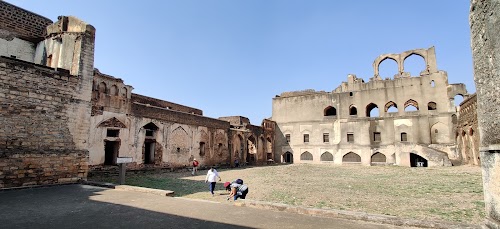
Gagan Mahal
Bidar, India
- Appreciate Indo-Islamic architecture
- Explore the ruined palace complex
- Imagine royal life in the palace
- Learn about Bahmani Sultanate history
- Photograph the historical architecture
Known for:
Description:
Gagan Mahal, meaning 'Sky Palace', is a captivating historical monument in Bidar, India. Though largely in ruins, it offers a glimpse into the architectural grandeur of the Bahmani Sultanate. The palace complex showcases a blend of Persian and Indian architectural styles, featuring impressive arches, intricate carvings, and spacious courtyards. Visitors can explore the remnants of the once-opulent royal residence, imagining the lives of the rulers who resided here. The site is a photographer's delight, with its weathered stone walls and historical ambiance creating a unique backdrop. It is a must-visit for history buffs and those interested in exploring the rich cultural heritage of Bidar. While restoration efforts are ongoing, the charm of Gagan Mahal lies in its raw, untouched beauty, offering a tangible connection to the past.
History:
Gagan Mahal was constructed in the early 14th century during the reign of the Bahmani Sultanate. It served as a royal palace and a significant administrative center. The palace witnessed numerous historical events and housed several Bahmani rulers. Over the centuries, the palace underwent various modifications and expansions, reflecting the changing tastes and architectural influences of different rulers. With the decline of the Bahmani Sultanate, Gagan Mahal gradually fell into disrepair. Despite its ruined state, the palace remains an important historical landmark, offering valuable insights into the architectural and cultural achievements of the Bahmani period. Archaeological excavations and restoration efforts are underway to preserve and showcase the historical significance of Gagan Mahal.